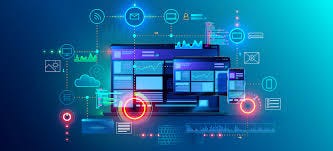What Is Application Modernization? How Does It Work?

In today’s fast-paced tech world, applications are the engines that drive businesses. But what happens when your trusty workhorse software starts to feel clunky and outdated? That’s where application modernization comes in.
Think of it as giving your applications a makeover. It’s about taking your existing software and updating it to leverage the latest technologies and development practices. This can involve a variety of approaches, but the overall goal is to make your applications more efficient, secure, and scalable.
Why Modernize?
There are several reasons why a business might choose to modernize its applications. Here are a few key drivers:
- Unlocking Innovation: Modern technologies open doors to new features and functionalities that can enhance your application’s capabilities.
- Boosting Agility: Modernized applications are easier to maintain and update, allowing you to respond quicker to changing business needs.
- Improved Scalability: Modern infrastructure can handle spikes in user traffic or data processing demands more effectively.
- Enhanced Security: Modernization often involves patching vulnerabilities and incorporating stronger security measures.
- Reduced Costs: By streamlining operations and leveraging cloud-based solutions, modernization can lead to significant cost savings.
How Does It Work?
The application modernization process can vary depending on the specific application and the desired outcome. Here’s a simplified breakdown of the general steps:
- Assessment: First, you need to understand what you’re working with. This involves evaluating your current application’s architecture, codebase, and functionalities.
- Strategy Development: Based on the assessment, you can define your modernization goals and choose the most suitable approach. This could involve replatforming to the cloud, adopting microservices architecture, or containerization.
- Modernization Project: This is where the actual transformation takes place. Developers will refactor code, integrate new technologies, and potentially migrate the application to a new platform.
- Deployment and Management: Once modernized, the application needs to be deployed and monitored to ensure smooth operation and ongoing maintenance.
Application modernization is an investment, but the potential benefits for businesses are significant. By bringing your applications up to speed, you can ensure they remain competitive and continue to support your evolving business needs.


Comments
Post a Comment